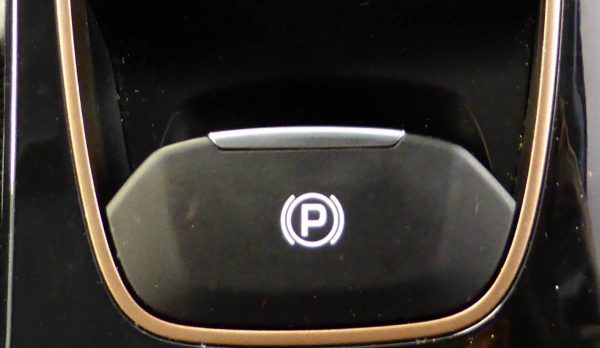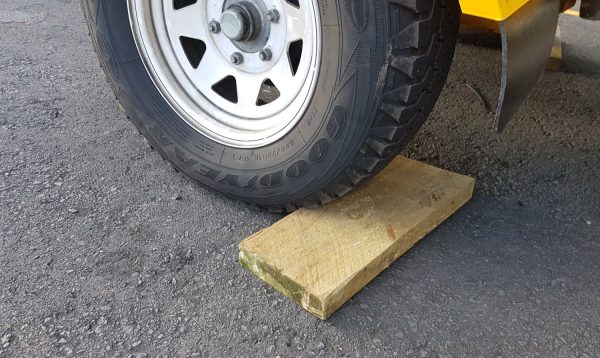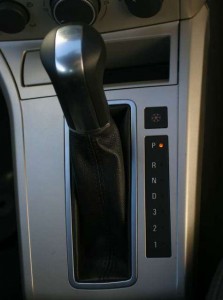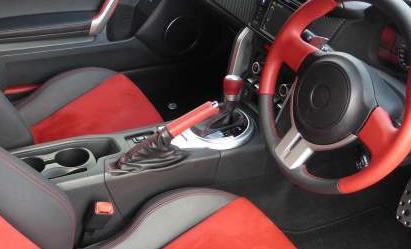
Whenever you are parked, you should use your handbrake (also called parking brake, emergency brake or e-brake). Different cars have different procedures and different ways of applying this brake. It can be a lever between the seats, a foot-operated brake to the left of the clutch, a switch, or a pull handle below the steering column. The handbrake usually only operates the rear wheels, but there are some exceptions.
If you don’t use the handbrake regularly it can seize up. It can also seize up in icy weather.
You might have an automatic handbrake which releases as soon as you engage a gear and engages if you are in neutral and turn off the engine. In this case, follow the advice below regarding trailers.

Manual transmission
You can use first or reverse gear to prevent a car moving on a slope (up to a point). This is because it takes a certain amount of energy to turn over the engine – the engine resists this, preventing the car from moving forwards or backwards. However, this should be used in conjunction with the handbrake.
If you’re towing a trailer or carrying a heavy load, it’s strongly advised to chock the wheels. This can be as simple as putting a piece of wood in front of the tyre, although the height of the chock should be increased if the slope is steep.

Flat ground: leave the gearbox in neutral, apply the handbrake.
Facing downhill: turn your front wheels towards the kerb, engage reverse gear, apply the handbrake. Remember that you’ll need to depress the clutch before you start the ignition. If the handbrake fails, the car will steer into the kerb if it overcomes the force required to turn the engine, which will prevent it from rolling down the hill.
Facing uphill: turn your front wheels towards the kerb, leave the gearbox in first, apply the handbrake. The same logic applies as parking facing downhill. If the handbrake fails, the car will steer towards the kerb.
It is possible for a weakly applied handbrake to loosen slightly and allow a car to move forwards or backwards on a slope which is why it’s important to also leave the car in gear or chock the wheels.
Automatic transmission

All scenarios: put the gearbox in P (park) then apply the handbrake. Remember to keep your foot on the footbrake until after you’ve applied the handbrake. This is because any forward or backward pressure when in P will make it more difficult to get it out of P and into gear. This is because the P mode drops a pin (or ‘pawl‘) into a notched wheel on the drive shaft. This pin can be bent with enough force. It’s why you should not try to move the gear lever into P while you are moving.
Again, chock the wheels of any heavy trailer so that it’s not putting undue force on the handbrake or transmission.
Pulling away from a stop
Use your handbrake to stop you rolling backwards or forwards as you start on an incline.
Protecting you from nose-to-tail accidents

Using your handbrake when you are waiting at traffic lights or a junction means that anyone hitting you from behind won’t shunt you into the car in front. Many drivers think that if they have their foot on the brake, this will work, but as a vehicle hits you from behind, it will lift your foot off the foot brake.
Using your handbrake to slow down
It was originally called the emergency brake because it was designed to be operated in the case that the main brakes failed, something that’s not common now. The handbrake is quite a weak brake but it can be used to slow you down if your foot brakes do fail. The handbrake provides less than half the power of a foot brake, plus it’s only operating on the rear wheels which typically can apply only 25% of the braking force due to weight transfer to the front of the car. This makes the handbrake safer to use because if too much braking power is applied to the rear wheels, they will lock and this can cause the car to spin if it’s in a turn.
Cars with handbrakes which are operated using a switch often have an emergency mode where you hold the switch for a couple of seconds and it will assume you need to do an emergency stop.
